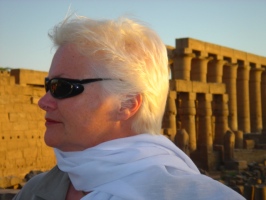I’m an artist on vacation, but I’m not always sketching and painting. England certainly provides a country full of color, including just about every variation on leaf and grass. Consider a few of the descriptors for the color green: apple, ash, Australian, beryl, black, blue, Bohemian, bronze, Chinese, chlorophyll, chrome, cinnabar, cold, earth, emerald, fir, forest, French, grass, Ionian, Kelly, lagoon, leaf, lizard, May, mossy, neon, office, olive, oxide, Paris, pea, phthalo, pine, Reseda, Rowney, sage, sap, shamrock, spring, spruce, sunlit, tea, terre verte, tropical, turquoise, umber, verdigris, Verona, and viridian. Whew! And they’re all here in the UK! You’d think this visitor, a desert visitor no less, would enthusiastically seek capturing them all.
I do carry a fat little sketchbook for when the mood strikes, and, on yesterday’s mostly sunny day, I could have been drawing en plein air. I’ve never been particularly enthusiastic about painting outdoors, and when I have done so, I’ve been irritable about the flies, sand, wind, and rain. Claude Monet and Vincent Van Gogh certainly recorded their complaints. One of Van Gogh’s works, The Olives (below)* even has a grasshopper’s head and hind legs entombed in the oil paint. Van Gogh expert Martin Bailey comments, “He either didn’t notice—or perhaps didn’t care—and carried on . . . .”

* The insect parts are in the lower right sector of the painting. You can view The Olives in the collection of the Nelson-Atkins Museum of Art in Kansas City, Missouri.
Oxford’s rain and drizzle are too daunting today, so art will have to come in book form. Blackwell Books Art and Poster section was a carnival of large-format volumes on art movements, artists, and criticism. I leafed through some hefty books on Islamic art.

Back in my Utah studio, I’m currently working on several large acrylic paintings based on the Arab world, several canvases at a time, among them “The Oudmaker’s Breakfast” and “Why Have You Brought Me Here?”, my third work in a Rudolph Valentino series. I am fascinated by Islamic border patterns, draped stripey fabrics, and Arab camels, goats, coffee pots, and musical instruments.
I also perused the poetry section in Blackwell. Next to a display of World War I poets, I found a book of American writer Sylvia Plath’s pen-and-ink sketches, including the sample at right. She’d done studies of shoes, wine bottles, boats, houses, and streets. Her sure hand and flowy draftsmanship were a revelation.

She’d been living in London for four years when, at her flat on a cold February morning in 1963, that same sure hand stuffed clothing around her children’s bedroom doors, opened the oven door, and turned on the gas. She’s buried in the New Cemetery of the small village of Heptonstall, West Yorkshire, where her husband Ted Hughes’ parents lived. Unforgiving tourists often ink over or chisel off the Hughes surname from her tombstone.
A little out of character for me, I’ve made no bookstore purchases today, so I pull out a small, damp umbrella from my backpack and push open Blackwell’s front door into the drizzle to the sidewalk, rejoining my travel companions loneliness and otherness. I pull my umbrella into commission, then dodge a gaggle of English school girls in navy blue uniforms as they skip into the book shop. I head for a nearby tearoom.

Post a Comment